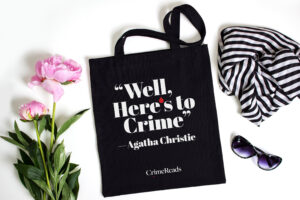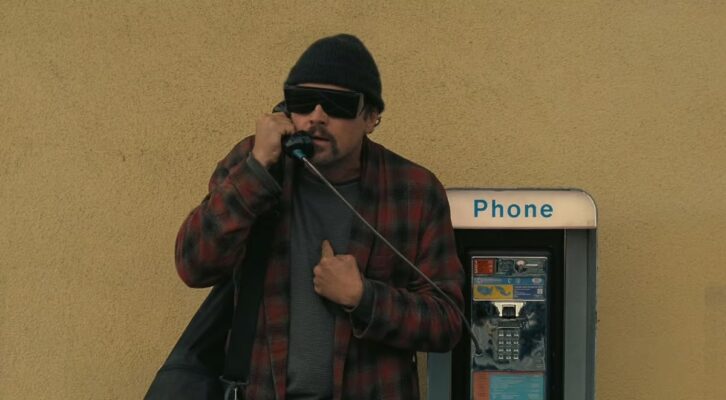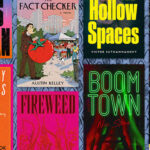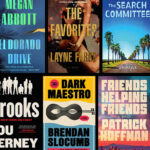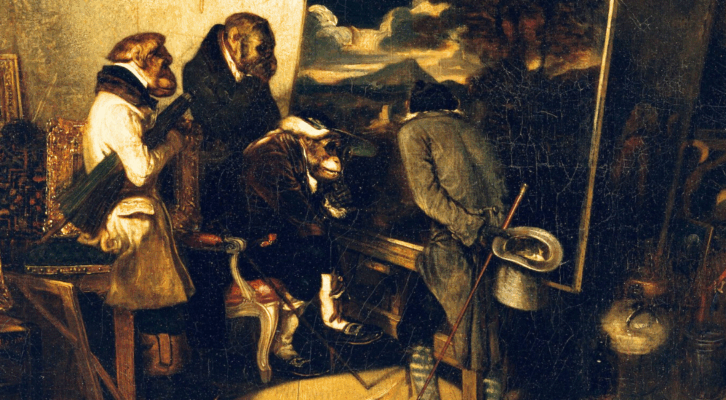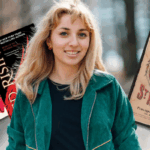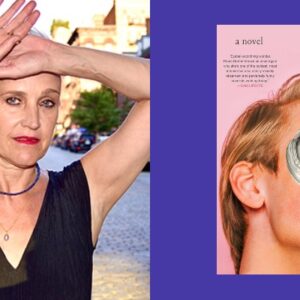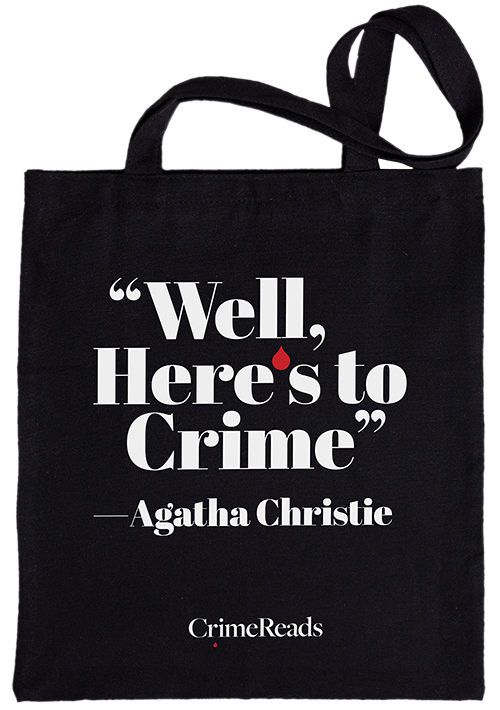Every reader has a book they’ve heard about so often that they feel like they’ve already read it. For me, it’s The Lovely Bones by Alice Sebald, and I don’t think I’m alone. Everyone, whether they’ve read the book or seen the movie or not, seems to have some familiarity with the story of Susie Salmon, who is horrifically murdered in the opening pages and narrates the remainder of the book from heaven.
I thought I already knew all about this book, but that was before I got a chance to talk about it with one of the most exciting and innovative crime writers I know, Danya Kukafka, nationally bestselling author of Girl in Snow and Notes on an Execution. Rather than focusing on the facts or the dramatis personae of a crime, Danya’s novels reveal the impact and aftermath of violence on those left behind. I appreciate them even more after having a chance to talk to her about The Lovely Bones, a novel that left its mark on her at a very early age.
Why did you choose The Lovely Bones by Alice Sebald?
I’ve been meaning to return to The Lovely Bones for many, many years. I first read it at thirteen. Of course I remembered loving it, but I didn’t reread it until a few months ago, when I was just blown away all over again. It made even more of an impression on me at thirty-two than it had the first time.
Tell me more about that. How did your perspective on the novel change between when you read it as a young teenager and now?
I’m pretty sure that I checked it out of my middle school library, and I’m sure my mom had no idea I was reading it. I never, ever forgot the beginning of the book, and the opening scenes in general were so formative for me. They’re very graphic, but also purposeful—all the violence in this book has a purpose and a point. It’s so dark and violent and horrific, but also so moving and beautiful. It was such an unusual book because, on the one hand, it’s dealing with such a heavy subject in an intense adult way, but at the same time I felt like I could understand it because I was the same age as the main character. By age thirteen, you’re definitely thinking about life and death and mortality, even if you don’t necessarily have the words for it.
There’s so much I want to follow up on there, but one thing that really struck me reading this for the first time was this idea of a sisterhood or a confederacy of women who have been victims of violence. Susie comes into contact with her murderers’ other victims, and that’s very much in Notes on an Execution as well. Do you think that was one of the ideas you responded to?
I’m sure it was on a subconscious level. I think I’ve sort of been writing around this book for many years, but I didn’t realize it until I reread it and then thought, “Oh, this was probably the formative text of my young adulthood.” Another book that I loved around that age was Elsewhere by Gabrielle Zevin, the author of Tomorrow and Tomorrow and Tomorrow. Elsewhere is also told from the perspective of a teenager who died, but it’s very different. It’s much more speculative, and the afterlife in that book is an actual physical space. It’s a cruise ship that lands on the shores of a new world, basically. That book is geared toward teenagers in a way that The Lovely Bones is not, but it also has the element of watching from beyond the veil what is happening in your former life. Both of those novels were really formative for me and for whatever reason, they stuck with me.
I read the opening lines of this novel to my fiction workshop the other day as an example of an absolutely unputdownable beginning: “My name was Salmon, like the fish; first name, Susie. I was 14 when I was murdered on December 6, 1973.” What makes this opening so effective?
I love those opening lines because they tell you exactly what you’re getting into. There’s something really straightforward and admirable about that. She’s not hemming and hawing. It’s the whole premise of the book in just two lines. It’s amazing.
That’s a great way to put it. It’s not the shock value of those lines that make them so memorable. It’s the concision of telling the reader everything they need to know so quickly.
Exactly. It’s so efficient.
I had somehow never read the novel before you suggested it for this interview, and after I picked up a copy, I kept getting to the scene of Susie’s murder and putting the book down. Then a couple of days later, I’d pick it up, try again to read that scene, and put the book down again. I finally got through it, and I’m glad I did, but it’s an incredibly graphic and difficult scene. Why do you think it was necessary for this story?
I have a strong stomach for violence and gore, but only when it has a point. I actually cannot watch horror movies. I don’t like straight horror. I can’t watch blood on screen. I sometimes can’t read it in books. But if it has an emotional depth to it, I find it can really say something. I think this book may have helped to shape my views in that way, because it shows that there’s more to violence than simply the shock value. I was looking at the reviews at the beginning of the book, and there’s one from Ron Charles who says, “Don’t start The Lovely Bones unless you can finish it. The book begins with more horror than you could imagine, but closes with more beauty than you could hope for. Alice Sebald has done something miraculous.” I thought that was so true. If you only focused on the horror and the violence, it would be an injustice to the novel. It’s everything that comes after that makes the violence mean something.
There’s another scene in this novel that I’ll never be able to forget, when Lindsey, Susie’s sister, breaks into the house of her murderer, George Harvey, and has to stay one step ahead of him. It’s almost painfully tense, and I think a lot of more conventional crime writers would be impressed by Sebald’s pacing here. Do you have any thoughts on that scene in particular?
I love that question, because it speaks to what most fascinates me about this book. There’s this added level of tension in that scene between what the character knows and the reader knows that I think is just absolutely genius. The reader knows that Lindsey is in the murderer’s house, but she only suspects him at that point; she doesn’t have any evidence. I honestly don’t know how Sebald pulls it off, but I think she’s able to establish all these layers of knowledge because of Susie’s omniscience. And then there’s also the moment-to-moment aspect of that scene, which also has so much tension. We know Harvey is coming home, and we know Lindsey is hiding from him. And we have the scene of what he did to Susie in our heads. We know he could do the same thing to Lindsey.
I think one reason I never got around to reading this novel was because I knew that Susie narrated the majority of the story from heaven, and I couldn’t imagine how a writer could do that without it being either completely saccharine or creepily Christian-coded. Sebald pulls it off, though. How do you think she does it?
It’s a good question. I’m playing with similar themes in my new work, and that’s part of the reason I went back to this novel. What’s interesting to me is the level of embodiment that Susie has. She calls the place she’s living now heaven, and she refers to her previous life as earth. But we never really see the physicality of her heaven, not in a detailed way. We have a tree, we have a gazebo, we have these specific spaces, but it’s never like, “Here’s how heaven works,” right? I think it works so well because Sebald keeps most of it off the page, and it’s just vibes. It’s so much better than her trying to overexplain it. If she said, “Okay, well, when you die, you walk through this portal and you blah blah blah,” it would probably be awful, but she doesn’t do that. That gives the reader the space to imagine those details for themselves.
Notes on an Execution also begins by revealing the identity of a murderer. How do you structure a novel that begins with what many crime novels try to keep hidden until the end?
Notes on an Execution takes a lot from The Lovely Bones, both in terms of structure and that, as you said, it reveals some major plot points at the very beginning. The mystery is in how those plot points affect the characters. That’s why I gravitate toward crime, I think, because I want to know what happens to the people. I guess I’d say that the driving tension of this book is whether they’re going to figure out who the murderer is, but I think it’s just as much about how things are going to turn out for her family. I think a lot of the tension comes from loving the characters, wanting them to find solace and closure, and wondering how they’re going to move on.
Is there anything else from this novel that you might come back to in your own work?
The level of depth she gives to the family. This book is really so much more about grief and trauma than it is about murder or violence. It’s about watching the people you love go through something really, really hard and try to move on from it, and it’s devastating in that way. Susie gets to watch her sister grow up from afar. She watches Lindsey become an adult woman, something that she’ll never get to do. I don’t know how Sebold maintains the tension through that, but somehow she does, and that’s what really interests me about it, structurally and on a craft basis. These people have been through a horrible thing, and we care about them. What happens next? It’s such a beautiful question, and it’s a new question every time it’s asked.


